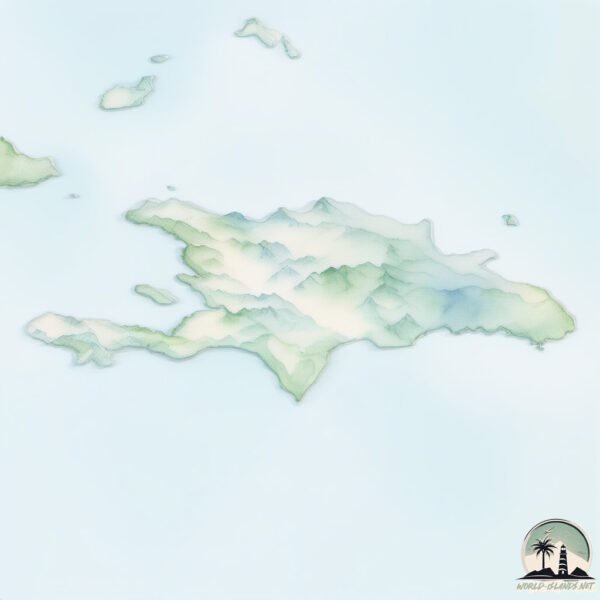Welcome to Hispaniola , a Tropical island in the Caribbean Sea, part of the majestic Atlantic Ocean. This guide offers a comprehensive overview of what makes Hispaniola unique – from its geography and climate to its population, infrastructure, and beyond. Dive into the details:
Geography and size of Hispaniola
Size: 74366 km²Coastline: 3324 kmOcean: Atlantic OceanSea: Caribbean SeaContinent: North America
Hispaniola is a Giant Island spanning 74366 km² with a coastline of 3324 km.
Archipel: Greater Antilles – A major island group in the Caribbean, including Cuba, Jamaica, Hispaniola, and Puerto Rico, known for their rich history and diverse cultures.
Tectonic Plate: Caribbean – Covering the Caribbean Sea and surrounding regions, this plate is bordered by the North American Plate and the South American Plate. Known for seismic activity, including earthquakes and volcanic eruptions, and features like the Puerto Rico Trench.
The geographic heart of the island is pinpointed at these coordinates:
Climate and weather of Hispaniola
Climate Zone: TropicalClimate Details: Tropical Savanna, WetTemperature: Hot
Climate Characteristics: Defined by distinct wet and dry seasons with high temperatures year-round. Pronounced rainfall occurs during the wet season, while the dry season is marked by drought.
Topography and nature of Hispaniola
Timezone: UTC-05:00Timezone places: America/New_YorkMax. Elevation: 3098 m Pico DuarteMean Elevation: 407 mVegetation: Agricultural MosaicTree Coverage: 31%
The mean elevation is 407 m. Dominating the island’s landscape, the majestic “Pico Duarte” rises as the highest peak, soaring to impressive heights. The island is characterized by Mountains: High, steeply elevated landforms. Characterized by both a high maximum elevation (over 500 meters) and a high mean elevation, creating rugged, mountainous terrains on islands.
Dominating Vegetation: Agricultural Mosaic
Vegetation: 19 vegetation zones – Exceptionally Diverse Island
Infrastructure and Travelling to Hispaniola
Does the island have a public airport? yes .
Does the island have a major port? yes .
The mean population of Hispaniola is 354 per km². Hispaniola is Moderately Inhabited. The island belongs to Dominican Republic .
The name of the island resonates across different cultures and languages. Here is how it is known around the world: Arabic: هيسبانيولا; German: Hispaniola; Spanish: La Española; French: Hispaniola; Portuguese: Ilha de São Domingos; Russian: Гаити; Chinese: 伊斯帕尼奥拉岛
Continuing your journey, Grande Cayemite is the next notable island, situated merely km away.
Divided island: How Haiti and the DR became two worlds
One island, two worlds. Follow Johnny on social media to stay up to ...
Why did Haiti and the Dominican Republic Break Up? (Short Animated Documentary)
Haiti and the Dominican Republic have been on and off for about four ...
Haiti and the Dominican Republic have been on and off for about four hundred years at this point. So why can't the two stay ...
A Tale of Two Islands
Why is Hispaniola divided between poor Haiti and the rich* Dominican? ...
Why is Hispaniola divided between poor Haiti and the rich* Dominican? Check out Mr. Beat's video here: ...
Dominican Republic is classified as Developing region: Regions characterized by lower income levels, with economies in the process of industrialization and modernization. The level of income is Upper middle income.
News – Latest Updates and Headlines from Hispaniola
Stay informed with the most recent news and important headlines from Hispaniola. Here’s a roundup of the latest developments.
Loading...
Social Media Posts about Hispaniola
Loading...
Please note: The data used here has been primarily extracted from satellite readings. Deviations from exact values may occur, particularly regarding the height of elevations and population density. Land area and coastline measurements refer to average values at mean high tide.

